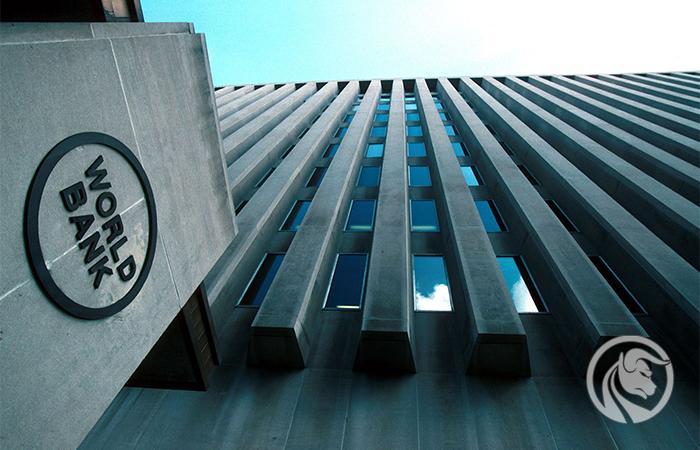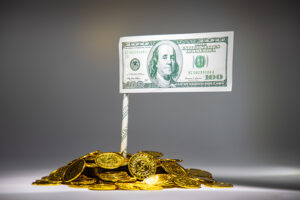The World Bank - everything you need to know about it
The establishment of the World Bank institutions took place after the Bretton Woods conference in 1944. The Bretton Woods conference laid the foundations for the monetary order that continues today. The Bretton Woods system was created in response to the post-World War II vacuum and the need to reorganize trade and monetary relations. The World Bank and the International Monetary Fund were established to create institutions that will oversee and enforce compliance with the arrangements and the system.
The conference was attended by delegates from 44 Allied countries, including the Government of the Republic of Poland in Exile, represented by Gustaw Gottesman. However, the decisive contribution to the final decisions was made by the United States and Great Britain for the strength and power of their economies. They had the greatest influence on the final shape of the Bretton Woods system John Maynard Keynes, British Government Representative; and Harry Dexter White, United States Representative.
Statutory goals
The main intention behind the creation of the World Bank was to enable low-interest loans to war-ravaged countries who could not afford to incur commercial debts.
The first years of the World Bank's operation were not easy due to the limited capital it had. After 1947, European countries began to receive aid under the Marshall Plan, prompting the World Bank to focus on countries in Africa, Asia and South America.
From 1989, the World Bank began to grant loans not only to countries but also to non-governmental organizations.
The World Bank today
Currently, the World Bank has 189 member states. It provides long-term loans on very preferential terms. The most needy member states and enterprises operating in their territory can count on interest-free loans and subsidies.
The World Bank's current mission is to end extreme poverty. The goal of the World Bank is to reduce the population living in extreme poverty to 3% by 2030. At the same time, the institution wants to promote the common well-being of mankind by increasing the income of the poorest 40% of citizens of each country.
Funds for loans and subsidies come from contributions from Member States and interest from the repayment of debts previously incurred.
World Bank Group
The World Bank is composed of:
- International Bank for Reconstruction and Development (IBRD)
- International Development Association (IDA)
- International Finance Corporation (IFC)
- Multilateral Investment Guarantee Agency (MIGA)
- International Center for Settlement of Investment Disputes (ICSD)
These institutions form the World Bank Group. The goal of the International Bank for Reconstruction and Development (IBRD) was to rebuild Europe devastated by World War II. Currently, it aims to reduce poverty in the world, especially in middle and low income countries. The International Development Association (IDA) was established to offer loans and subsidies to non-creditworthy countries to take out such loans from commercial institutions. The International Finance Corporation (IFC) provides economic support to developing countries. Its main operating tool is the provision of direct loans in the private sector. The Multilateral Investment Guarantee Agency (MIGA) supports private investment in developing countries. It also insures investments against economic risk. The International Center for Settlement of Investment Disputes (ICSD) conducts negotiations between investors and settles disputes.
The power of voice of individual countries
Member states have different numbers of votes when making decisions. The United States, Japan, China and the United States have the greatest influence on decisions made by the World Bank Germany.
Top 5 countries voting power in the World Bank
| End | Percentage of all votes |
| United States | 15.63% |
| Japan | 7.6% |
| China | 4.68% |
| Germany | 4.16% |
| Great Britain | 3.86% |
Involvement of the World Bank in Poland
Since the 90s, the World Bank has granted Poland loans totaling $ 16 billion. In addition, consulting projects were implemented. Currently, the activities of the World Bank in Poland focus on the quality of healthcare, environmental issues and regional convergence.
The World Bank is carrying out a project to modernize and improve flood protection in Poland. In the field of health, since 2013, the integration of medical services at all levels of care has been carried out in order to improve access to services for patients. The World Bank also supports the least developed regions of Poland in stimulating local entrepreneurship, strengthening vocational education and improving the energy efficiency of single-family houses.
Selected projects of the World Bank
Protection of the ozone layer
In 1987, the World Bank became involved in activities aimed at limiting the expansion of the ozone hole. The goal was to reduce emissions of chemicals that increase the ozone hole by 95% by 2015. According to research and estimates from 2018, it was possible to reduce the emission of freons, i.e. substances most responsible for the destruction of the ozone layer, by as much as 90%.
Forest protection
In 1991, the World Bank declared that it would protect forests, especially the Amazon forests, from logging, without financing any commercial projects that would have a damaging effect on forests and the environment.
Food safety
In 2010, the World Bank launched the World Food Security Program. The program helps 8 countries develop their agriculture, research centers and food trade. For this purpose, the World Bank and the Melinda and Bill Gates Foundation have allocated $ 925 million. As part of the program, there are also actions aimed at feeding children in schools and administering vitamin A.






















![Forex Club – Tax 9 – Settle tax on a foreign broker [Download the Application] Forex Club - Tax 9](https://forexclub.pl/wp-content/uploads/2024/02/Forex-Club-Podatek-9-184x120.jpg?v=1709046278)
![Trading View platform – solutions tailored to the needs of traders [Review] trading view review](https://forexclub.pl/wp-content/uploads/2024/03/trading-view-recenzja-184x120.jpg?v=1709558918)
![How to connect your FP Markets account to the Trading View platform [Guide] fp markets trading view](https://forexclub.pl/wp-content/uploads/2024/02/fp-markets-trading-view-184x120.jpg?v=1708677291)
![How to invest in ChatGPT and AI? Stocks and ETFs [Guide] how to invest in chatgpt and artificial intelligence](https://forexclub.pl/wp-content/uploads/2023/02/jak-inwestowac-w-chatgpt-i-sztuczna-inteligencje-184x120.jpg?v=1676364263)




![Izabela Górecka – “Success on the market depends not only on knowledge, but also on emotional stability” [Interview] Izabela Górecka - interview](https://forexclub.pl/wp-content/uploads/2024/04/Izabela-Gorecka-wywiad-184x120.jpg?v=1713870578)
![WeWork – the anatomy of the collapse of a company valued at $47 billion [WeWork, part II] wework bankruptcy story](https://forexclub.pl/wp-content/uploads/2024/04/wework-bankructwo-historia-184x120.jpg?v=1711729561)
![Adam Neumann – the man who screwed up Softbank [WeWork, part AND] adam neumann wework](https://forexclub.pl/wp-content/uploads/2024/04/adam-neumann-wework-184x120.jpg?v=1711728724)




![The most common mistakes of a beginner trader - Mr Yogi [VIDEO] Scalping - The most common mistakes of a beginner trader - VIDEO](https://forexclub.pl/wp-content/uploads/2024/03/Scalping-Najczestsze-bledy-poczatkujacego-tradera-VIDEO-184x120.jpg?v=1711601376)
![Learning patience: No position is also a position - Mr Yogi [VIDEO] Scalping - Learning patience - No position is also a position - VIDEO](https://forexclub.pl/wp-content/uploads/2024/03/Scalping-Nauka-cierpliwosci-Brak-pozycji-to-tez-pozycja-VIDEO-184x120.jpg?v=1710999249)
![When to exit a position and how to minimize losses - Mr Yogi [VIDEO] Scalping - When to exit a position and how to minimize losses - VIDEO](https://forexclub.pl/wp-content/uploads/2024/03/Scalping-Kiedy-wyjsc-z-pozycji-i-jak-minimalizowac-straty-VIDEO-184x120.jpg?v=1710336731)



















Leave a Response